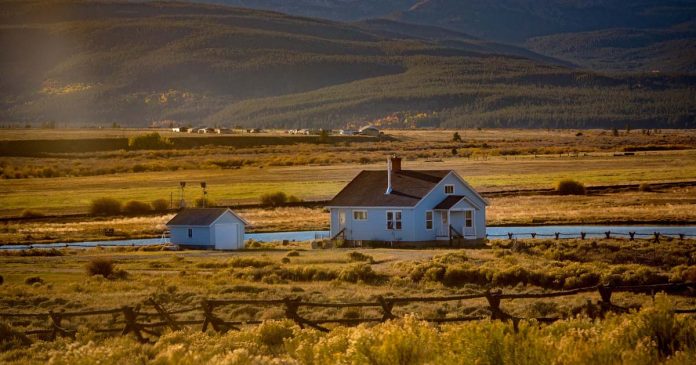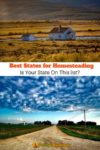You might think the land is the most critical aspect of choosing a homestead location. However, the state where the land is located can be just as important. Some states are much better for homesteading.
Here’s why and the best states for homesteading in the USA.
If you want to learn more about homesteading, see these introductory posts:
Why Choice of State Matters for Homesteading
No matter how self-reliant you want to be, you will still be subject to the local laws and regulations of the place where your homestead is located.
In some cases, this could crush your dream of being self-sufficient. In other situations, the laws actually might work in your favor.
Here are some of the state laws, policies, and resources to look out for.
Rebates for Renewable Energy
Setting up a homestead can be expensive, especially if you want to install renewable energy like solar. The federal solar tax credit (ITC) allows you to deduct some of the cost of your solar panels from your taxes.
On top of this, many states or municipalities offer additional tax rebates or incentives for going solar. You can save a lot of money on initial costs by choosing one state over another.
Price for Excess Solar (Net Metering Policies)
Another thing to consider in regards to homestead location is net metering policies. Net metering allows you to sell excess generated electricity back to the power company.
Some states have terrible limitations on net metering. For example, you might not be allowed to sell excess electricity if your solar system is over a certain size.
By contrast, some places use net metering to incentivize homeowners to install solar and buy back electricity at prices higher than retail value. You can learn more about net metering policies here.
Net metering policies won’t matter if you want to disconnect from the grid completely.
Being Legally Allowed to Detach from Grid
Want to disconnect from the grid entirely and rely only on your own electricity and water source?
In most areas, it is actually illegal to disconnect from the grid!
These laws are usually decided on a local level and not state level, so you’ll have to carefully research the laws of your potential homestead location.
Read:
State Homestead Laws
Homestead laws allow people to declare all or part of their land as a “homestead.” There are two main benefits to doing this:
- Homestead is protected from creditors: The homestead cannot be seized due to unpaid debts, personal loans, medical bills, etc.
- Reduced property taxes: In some cases, the homestead won’t count toward your property taxes. In places with high property taxes, this can add up to significant yearly savings.
Homestead laws vary drastically by state. Usually, they specify an exact amount that is protected. For example, Massachusetts has a high homestead exemption amount of up to $500,000. Arkansas lets you protect your entire home. By contrast, Kentucky only protects $5,000.
The homestead protection amount isn’t always the same as the amount that gets exempted from your property taxes (if any).
For more on this, read our post about Homestead Declaration.
Property Taxes
When you homestead, your property is your main asset. Property taxes can be very high if you have a large, valuable piece of land. In the long run, buying a pricier piece of land often makes more sense, but in a state with lower property taxes.
As mentioned above, some state homestead laws allow you to deduct the value of your homestead from your property taxes.
For example, a state might have a $50,000 homestead property tax exemption. If your small homestead is valued at $75,000, you only need to pay property taxes on $25k of it. So, even if the state property taxes are high, you might not have to pay much thanks to an exemption.
Climate & Natural Resources
I often see Arizona and Nevada in lists of the best states for homesteading. Sure, land in those states might be very cheap – but it is cheap for a reason!
You’ll have difficulty living off the land without natural resources like water and rich soil. Climate is also very important, especially for novice homesteaders.
The growing season is very short in colder areas like the northern states. You can still homestead there, but the learning curve is higher.
I suggest taking a look at the USDA Hardiness Zone map. Zones 6a to 8b are generally best for homesteading. Warmer zones are suitable for growing but are usually more prone to natural disasters.
Community & Remoteness
Does your vision of homesteading involve living far away from civilization and going months without seeing anyone? Then, you won’t care as much about road conditions, schools, and the number of farmers’ markets nearby.
But maybe you envision a close-knit community that helps each other with tasks, trades homemade products, and offers support.
In this case, you will want to choose a state with more homesteaders and services. For example, Oregon offers homesteaders many grants and educational opportunities. Plus, there are many farmers marketers around the state for selling your goods.
Disaster Safety
States like Florida, Texas, and Louisiana might be great in some aspects for homesteading, but they are also very prone to hurricanes and flooding.
It’s much harder to evacuate when you have a homestead, especially with animals to care for. So, think twice before homesteading in an area prone to disasters.
Read more about the states with the least natural disasters.
Homeschooling Laws
If you have children and want to homeschool them on your homestead, you’ll need to consider those laws, too. Some of the best states for homeschooling are Texas, Oklahoma, Missouri, Iowa, Illinois, Indiana, and Michigan.
See a map with homeschooling laws here.
Whether You Qualify As a Farm
Many states provide various tax benefits to farmers, such as exemptions or rebates on property or sales taxes. There are also plenty of tax deductions for supplies like seeds, feed, and equipment.
In some states, it’s straightforward to qualify as a farm. For example, New Jersey only requires you to have 5 acres and sell an average of $1,000 annually to be a farm. Some states are much stricter, though, so check the local laws.
Best States for Homesteading
There are a lot of factors to consider when choosing the best state for homesteading, and many of these factors are very personal in nature.
I’ve tried to be unbiased and chose the top states based on all the abovementioned factors, like taxes, favorable homesteading laws, and climate. Here they are!
1. Iowa
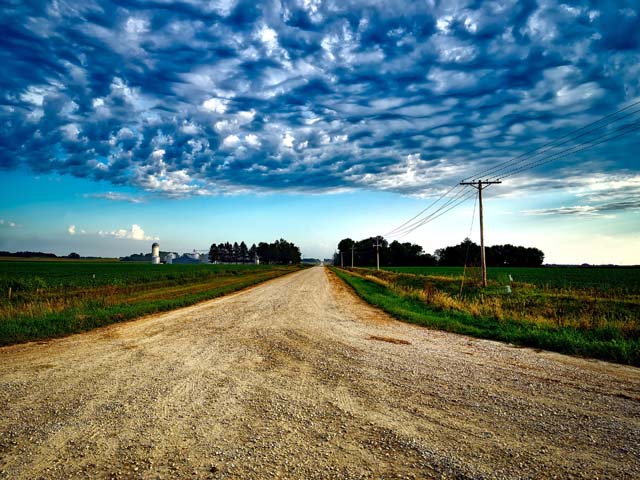
Iowa has some of the most arable land in the United States, which makes it great for starting a self-sufficient homestead. Since the state is big on agriculture, you’ll be in good company with many of your neighbors growing food.
The cost of living in Iowa is low. Yet, the school system is still great, and nearby Des Moines is bustling with culture if you feel the need to connect.
Of course, there are downsides to homesteading in Iowa. The state is primarily flat and visually dull. The winters are some of the worst in the USA. Depending on your income, the state taxes might get very high.
Read more about homesteading in Iowa.
2. Wyoming
Wyoming has a lot of things going for it.
The cost of living is very low, there is a low population density and plenty of agricultural land suitable for farming or raising animals.
The vistas are beautiful, and you can enjoy homesteading in peace in this state.
There are surprisingly many sunny days in Wyoming: 114 days of the year are clear, and the state averages over 3,000 hours of sunshine per year – more than even California! Only Arizona gets more sun; a Wyoming homestead could be great for solar power.
Not everyone will appreciate the remoteness of Wyoming life, though. If you aren’t near a big city or town, you might have to drive long distances to get supplies or send your kids to school. There aren’t many cultural institutions and only one public university.
3. Arkansas
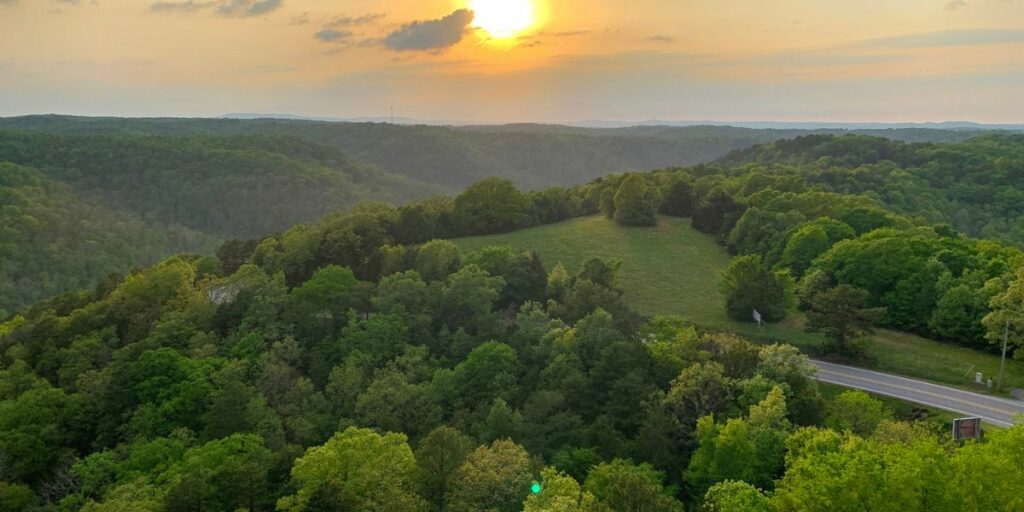
When it comes to homesteading, Arkansas has a lot to offer. Many homesteaders flock to the Ozarks because of their beauty and natural resources. There are over 9,700 miles of streams and 600,000 acres of lakes.
Read more about homesteading in Arkansas.
Arkansas has a lower learning curve for homesteading compared to many other states in the USA. The land is primarily arable, and the climate is moderate. The USDA puts most of Arkansas in the hardiness zone of 6b to 8a, which means you get about 200 days between last and first frost.
The cost of living in Arkansas and land prices are still reasonably low. However, it can be difficult to find land since most of it is already taken by large agriculture operations.
If you enjoy solitude, the state is a great place to live. However, if you want to get involved with local communities, you might be a bit upset by the amount of crime, poverty, poor school systems, and other issues.
4. Idaho
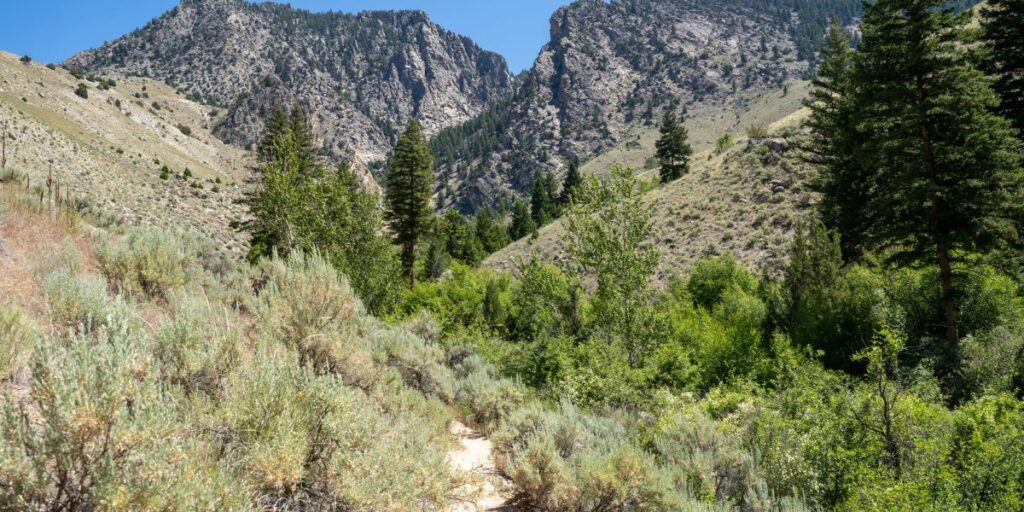
Idaho is another highly-agricultural state in the USA. Because upwards of 15% of the population is farmers, you will find a community sympathetic to homesteading ideals.
Read more about homesteading in Idaho
Because of its natural beauty and low cost of living, many people are flocking to Idaho. The state has experienced a huge housing and population boom, making it a bit harder to be isolated. Traffic jams are also becoming more common.
Don’t be surprised if land prices in Idaho spike.
5. Oregon
Oregon is becoming an increasingly popular state to move to, especially with Californians who want to escape the rat race and high cost of housing.
Nature lovers will never be bored in Oregon because of all the public land that is open to anyone. There are beaches for surfing and diving, forests for hiking and camping, and even deserts.
The cost of living in Oregon is still pretty high, and average home values are one of the highest in the country. But, despite this, farmland in Oregon is still very affordable. Oregon has a strong homesteading culture and over 30,000 small farms in the state.
There are a lot of resources to support your homesteading endeavors, like farmers’ markets where you can sell food, free educational opportunities for farmers, and grant programs.
6. Indiana
In particular, the southern half of Indiana is particularly good for homesteading. It has a warmer climate with fewer days of harsh weather, so you’ll have a longer growing season and be able to diversify your crops. The southern half is also less populated than the north.
While homesteading hasn’t taken off in Indiana as much as in some other states, it still has a long farming tradition. There are over 56,000 farms in the state, and 96% are small, family-owned operations. Since there are already so many farmers, finding affordable land for your homestead can be tricky.
Living in Indiana is affordable if you can swing the initial high land prices. The taxes are manageable (at least compared to most of the country). The state also has plenty of beautiful green areas; it’s not all just corn fields!
7. Virginia
When it comes to growing your own food, Virginia is one of the best states. It is in the USDA Hardiness Zones of 5a to 8a, which means it doesn’t get extreme highs or lows. First, frost doesn’t hit under the under of November for some areas, which gives you nearly 200 days of frost-free growing.
Virginia is more populated than other states, so you’ll have difficulty finding land if you want to be reclusive.
Farmland is pricey, and while property taxes are low, the income tax is high.
You might also be annoyed by noise from the many highways or the sound of jet planes overhead from the nearby military bases. However, the higher population means more resources like schools and job opportunities (in case you don’t plan on homesteading as your main job).
8. North Carolina
No, you won’t find many homesteaders on the coast of North Carolina. However, the western part of the state is great for homesteading. A lot of people choose to get land in the mountains. It’s not as suitable for growing food but is great for raising goats for milk.
True, the western part of the state doesn’t have as warm of a climate as the eastern part. However, the weather is still mild, and you get a relatively long growing season. There are also wild berries, mushrooms, and other plants you can forage or grow. Being away from the coast also puts you further out of danger from the many hurricanes that North Carolina has each year.
Land in North Carolina can be costly, and the state income and sales taxes are also high. However, the state does have some laws favorable to homesteading and good rebates for installing solar systems.
9. Missouri
Missouri is an excellent state for homesteading because of its long farming tradition. You’ll find a community of people who know all about self-sufficient living. There are nearly 95,000 farms in Missouri, most of which are family owned and under 300 acres. The local laws tend to be favorable to homesteading.
Much of the state is great for growing food, though there are plenty of areas where the soil is rocky or lacks timber for building and fuel. Unfortunately, the best homesteading land can be costly to buy. Property and sales taxes are moderate, but the state income tax is high.
Missouri experiences all four seasons, though the winters tend to be relatively mild, and the summers aren’t as bad as its southerly neighbors. The location does mean Missouri often gets hit by natural disasters like flooding, tornadoes, and ice storms – so be prepared.
What do you think is the best state for homesteading? Let us know in the comments below.

